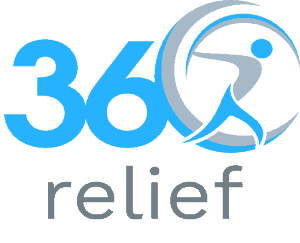
Make This Christmas Pain-Free: 10% Off on Supportive Wear!
Holidays are coming, which means that let’s welcome them with joy, laughter, and, of course, some comfort! At 360 Relief,

Table of Contents
ToggleMonkeypox or Mpox is a rare infectious disease which is caused by the virus – Monkeypox abbreviated as MPXV. Usually, the virus transmits to humans from animals. The primary source of transmitting the virus is direct contact with the infected animals. The disease is similar to smallpox in symptoms; however, it is less severe than smallpox.
Recently, a global outbreak occurred between 2022 and 2023. The natural resource of spreading the virus is still unknown; however, some small mammals, including monkeys and squirrels are susceptible. The outbreak suddenly appeared in May 2022 and spread rapidly across the Americas, Europe, and then all six regions of the World Health Organisation – WHO. Around 87 thousand cases and 112 deaths were reported from 110 countries worldwide.
According to the recent report of Gov.uk, there were around 3,738 monkeypox cases confirmed in the United Kingdom between May 6th, 2022 and February 27th, 2023. The following is the detail of the confirmed cases reported in the different regions in the UK:
| UK Nations | Total Confirmed Cases |
| England | 3,558 |
| Northern Ireland | 34 |
| Scotland | 98 |
| Wales | 48 |
| Total | 3738 |
Monkeypox is not a new viral disease; however, it was first discovered in 1958 when a pox-like disease was spread among monkeys kept for research in Denmark. Due to its similarity to smallpox, the disease was named Monkeypox. However, smallpox is caused by a different virus, known as variola virus. The first case of monkeypox in humans was diagnosed in 1970, in the Democratic Republic of Congo. After this, several outbreaks were reported in the Western and Central African countries. The outbreaks were particularly reported in rural areas where people had direct contact with animals.
One of the largest outbreaks was reported in 2017 in Nigeria when over 200 cases were confirmed and several deaths reported. The outbreak has also been confirmed or reported in several other African countries, including Liberia, Cameroon, and Central African Republic. Many other occasional cases have been reported in the rest of the world, including the United Kingdom, the United States, and other regions. Here we come with the common causes, symptoms, diagnosing plans, and treatments of Monkeypox. As well as this, we have also discussed the self-care and preventive measures, suggested by experts, to help speed up recovery and avoid the chances of monkeypox.
Sometimes, it becomes difficult to diagnose monkeypox because it shows the same symptoms and signs similar to other infectious diseases. To better understand the symptoms, healthcare professionals suggest a laboratory test – polymerase chain reaction (PCR). Laboratory technicians take the specimens directly from the rash skin, fluid, or crusts. A blood test or anti-body detection test is not recommended for monkeypox because they are failed to distinguish between various orthopoxviruses.
Commonly, monkeypox is transmitted to humans from infected animals. The virus transmits through direct contact with infectious crusts, rash, or scabs. The virus may also spread through fluids from saliva, sores, or infected body fluids, such as respiratory secretions.
The virus may also spread through person-to-person contact with infectious skin and other lesions, such as on the genitals or in the mouth.
The signs and symptoms of monkeypox usually begin within a week but may start between 1 and 21 days after exposure. The symptoms of monkeypox may last 2 – 4 weeks. However, the symptoms may last longer in people with weakened immune systems. The following are the common symptoms resulting from monkeypox:
People may also suffer from skin lesions. Some people may have one or more and others may experience hundreds or more skin lesions. You may experience lesions anywhere on the body. For example, they may usually be found in the following areas:
The basic purpose of treating monkeypox is taking care of rashes, managing pain, and preventing complications. Taking care of the symptoms early is necessary to manage the primary symptoms and reduce the chances of further problems. Vaccination for monkeypox helps prevent infection. The person should be vaccinated within 4 days of contact with others suffering from monkeypox. It may also be necessary to vaccinate the person when there are no symptoms within 14 days.
Some people, such as healthcare workers, are at a high risk of infection and they are recommended to be vaccinated – especially during an outbreak to prevent monkeypox.
Tecovirimat – a vaccine originally developed to treat smallpox may also be used to treat the symptoms of monkeypox. Several other antivirals may also be considered helpful and further studies on these antivirals are underway.
Generally, in most people, the monkeypox symptoms may get recovered within 2 – 4 weeks. You must follow the given self-care and preventative measures, recommended by experts, to speed up recovery or prevent the spread of monkeypox:
You must also avoid doing the following activities, to speed up the recovery from monkeypox:

Holidays are coming, which means that let’s welcome them with joy, laughter, and, of course, some comfort! At 360 Relief,

Happy Cyber Monday to everyone; it is a perfect occasion for 360 Relief to offer a special discount of 10%

This Black Friday, take advantage of exclusive 10% savings on some of 360 Relief’s best-selling compression socks and support braces!

Everyday life includes walking up stairs, but knee discomfort can make this basic activity difficult. Walking up or down stairs

Cooking is a beloved activity for many, but for those struggling with knee pain, standing in the kitchen can quickly

We’ve all been there. On a ride in a car, for instance, to the country home for a weekend break

Gardening is enjoyable for many people and those who like tending to their lawns and plants usually find it therapeutic

Do you have a painful knee problem that takes you to physiotherapy…for an injury that hampers your daily living…your workout

Training can be very much associated with some pains and injuries that may be experienced by the trainers. As there

Office workers often spend hours seated at their desks, focusing on tasks while unknowingly putting their health at risk. The

Winter often brings more than just a change in weather; for many, it also means dealing with unexpected swelling in

Compression socks have become a critical tool for athletes across all sports. Whether you’re a marathon runner, cyclist, or weightlifter,

October marks the beginning of National Cholesterol Month in the UK, a time dedicated to raising awareness about cholesterol and

Overall, there is nothing to match the experience of watching musicians perform live in an outdoor concert in Glastonbury. However,

Today charity runs have gained popularity as a way of raising cash for a cause in the United Kingdom. From
Please enter your email to subscribe to our newsletter for exclusive offers and updates
Copyright © 2025 | 360 Relief Ltd | Sitemap

